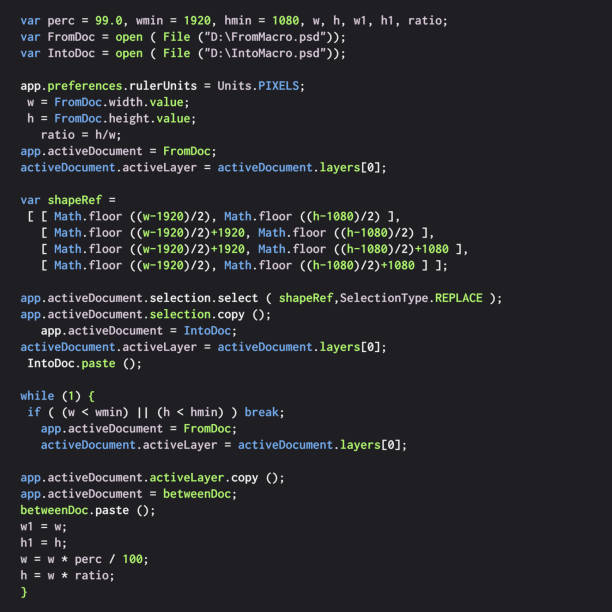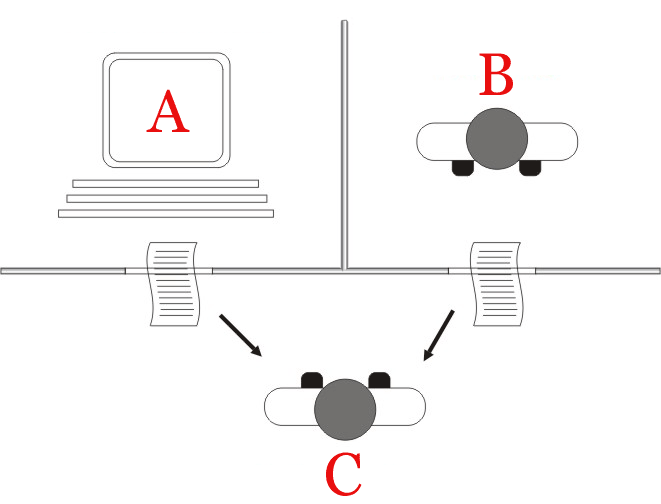In the modern world, where digital connectivity defines almost every aspect of life, security has become one of the most critical concerns for individuals, businesses, and governments alike. From personal emails to multinational corporate databases, data flows continuously across the internet, making security breaches and cyberattacks a persistent threat. Among the many mechanisms designed to protect digital systems, the firewall remains one of the most fundamental and enduring.
A firewall acts as a digital gatekeeper, monitoring and controlling the flow of data between networks. It examines incoming and outgoing traffic based on predetermined security rules and decides whether to allow or block specific data packets. In essence, it creates a barrier between a trusted internal network and untrusted external sources such as the internet. Just as the walls of a fortress protect its inhabitants from intruders, firewalls serve as the first line of defense against malicious cyber activity.
Understanding how firewalls work requires exploring not only their technical mechanisms but also their evolution, types, architectures, and role in the broader landscape of cybersecurity. Firewalls are not merely single tools—they are dynamic systems that embody decades of innovation, research, and adaptation to an ever-changing digital threat environment.
The Origins and Evolution of Firewalls
The concept of a firewall in computing originated in the late 1980s when the internet began to connect more computers and networks across the world. Early network engineers quickly realized that the open design of the internet, while ideal for communication, was inherently insecure. Without protective measures, any system connected to the network could be accessed or attacked by unauthorized users.
The term “firewall” was borrowed from architecture and engineering, where it referred to a physical barrier designed to prevent the spread of fire within buildings. Similarly, in the digital context, a firewall was conceived as a way to prevent the “spread” of digital threats such as unauthorized access, worms, and viruses.
Early firewalls were relatively simple packet filters that inspected network packets based on basic criteria such as source and destination addresses or port numbers. However, as cyber threats became more sophisticated, firewalls evolved. The 1990s introduced stateful inspection firewalls, which analyzed the context and state of connections rather than just individual packets. This allowed for a more nuanced understanding of traffic patterns and made it harder for attackers to disguise malicious activity.
In the 2000s and beyond, the rise of web applications, mobile devices, and cloud computing led to the emergence of more advanced solutions such as proxy firewalls, next-generation firewalls (NGFWs), and web application firewalls (WAFs). These modern systems incorporate deep packet inspection, artificial intelligence, intrusion detection, and behavioral analysis to identify and neutralize complex cyber threats.
Today, firewalls are not only hardware or software components but often integrated into cloud environments, virtualized systems, and even network routers. Their continuous evolution reflects the escalating arms race between cybersecurity professionals and cybercriminals.
The Fundamental Principles Behind Firewalls
To understand how firewalls protect digital environments, it is essential to grasp their fundamental operating principles. At the most basic level, a firewall functions as a filter that monitors data packets traveling between networks. Each packet contains information such as its source and destination address, communication protocol, and payload data.
The firewall applies a set of predefined rules—known as an access control policy—to determine whether each packet should be allowed through, blocked, or logged for further analysis. These rules are based on various parameters such as IP addresses, port numbers, protocols (like TCP, UDP, or ICMP), and even application types.
A firewall sits at a network boundary—typically between an internal local area network (LAN) and an external wide area network (WAN) such as the internet. It may also be used between different segments of an organization’s network to isolate sensitive systems. The decision-making process within a firewall can occur at multiple layers of the OSI (Open Systems Interconnection) model, from the network layer (where IP packets are handled) to the application layer (where data content is analyzed).
The most effective firewalls maintain a balance between security and usability. Blocking too much traffic can disrupt legitimate business operations, while allowing too much can expose vulnerabilities. Thus, designing firewall rules and policies requires a careful understanding of network behavior, application needs, and organizational security priorities.
Packet Filtering and the First Generation of Firewalls
The earliest firewalls, developed in the late 1980s and early 1990s, were based on packet filtering. These devices examined the header information of each network packet to determine whether to allow or deny it. Packet filters used simple rule sets specifying which IP addresses, ports, and protocols were permitted.
For example, an organization could configure its firewall to block all incoming traffic except for web requests (HTTP) on port 80 and secure traffic (HTTPS) on port 443. Similarly, it could prevent internal users from connecting to unauthorized external services.
While packet filtering was an important first step in network security, it had limitations. It operated only at the network layer and lacked the ability to track the state of connections or inspect packet payloads. This made it vulnerable to spoofing, fragmentation attacks, and other techniques that manipulated packet-level details.
Despite its simplicity, packet filtering remains a fundamental component of modern firewalls. Even the most advanced systems today rely on filtering mechanisms as part of a layered approach to threat prevention.
Stateful Inspection and the Second Generation of Firewalls
The next major innovation in firewall technology came with the development of stateful inspection, also known as dynamic packet filtering. Introduced in the early 1990s, stateful firewalls added context-awareness to packet filtering by maintaining a “state table” of active connections.
Rather than examining each packet in isolation, a stateful firewall understood the state of each session—whether it was part of an established, new, or invalid connection. This allowed the firewall to recognize legitimate ongoing sessions while filtering out unexpected or malicious traffic.
For example, when a user inside a network initiated a web request, the firewall recorded that outgoing connection in its state table. When the response returned from the web server, the firewall recognized it as part of a valid session and allowed it through. Any packets that did not match a known session were dropped or flagged as suspicious.
Stateful inspection dramatically improved network security because it could detect abnormal patterns, such as unsolicited packets that did not belong to any established session. It also simplified network management by reducing the number of explicit rules administrators needed to define.
Application-Level Gateways and Proxy Firewalls
As internet applications became more complex, attackers began exploiting vulnerabilities at the application layer—the level where users interact with software through web browsers, email clients, and other tools. Packet filtering and stateful inspection alone were insufficient to detect threats hidden within legitimate application traffic.
To address this, application-level gateways, also known as proxy firewalls, were developed. These systems operated at the application layer of the OSI model and acted as intermediaries between users and external servers. Instead of allowing direct communication, the proxy firewall received requests from clients, evaluated them, and then forwarded them to the destination if they were deemed safe.
This approach provided several advantages. First, it allowed for deep inspection of traffic contents, including application commands, file transfers, and URLs. Second, it enabled administrators to enforce detailed security policies, such as blocking specific websites or filtering email attachments. Finally, because the firewall acted as an intermediary, it could conceal the internal network’s IP addresses from external entities, providing an additional layer of anonymity.
However, proxy firewalls also introduced challenges. They often required significant processing power and could slow down traffic, especially for high-volume networks. As a result, they were typically used for specific purposes, such as securing web or email gateways, rather than as general-purpose firewalls.
Next-Generation Firewalls (NGFWs)
By the early 2000s, cyber threats had evolved beyond simple port-based attacks. Hackers began using application-level exploits, encrypted traffic, and polymorphic malware to bypass traditional defenses. In response, the next generation of firewalls emerged, integrating multiple security capabilities into a single platform.
Next-generation firewalls (NGFWs) combine the features of stateful inspection, intrusion prevention systems (IPS), deep packet inspection, and application awareness. They analyze traffic not only by port and protocol but also by the specific applications and users involved. This enables them to distinguish between legitimate and malicious uses of common protocols such as HTTP or HTTPS.
For instance, an NGFW can differentiate between web browsing, video streaming, and peer-to-peer file sharing—all of which may use the same ports—and enforce policies accordingly. Many NGFWs also incorporate features such as sandboxing, SSL/TLS inspection, and integration with external threat intelligence feeds to detect zero-day attacks.
The introduction of NGFWs marked a major milestone in the evolution of cybersecurity, enabling organizations to defend against increasingly sophisticated and targeted attacks.
Web Application Firewalls (WAFs)
With the rise of dynamic web applications, traditional firewalls and NGFWs alone were not enough to protect against threats such as SQL injection, cross-site scripting (XSS), and session hijacking. These attacks exploited vulnerabilities within web applications themselves rather than the network infrastructure.
Web Application Firewalls (WAFs) were developed to address this challenge. Operating specifically at the application layer, WAFs inspect and filter HTTP and HTTPS traffic to detect and block malicious web requests. They analyze user input, cookies, and URL parameters to identify patterns that may indicate an attack.
For example, a WAF can detect and block an SQL injection attempt by identifying suspicious database commands within a web request. Similarly, it can prevent cross-site scripting attacks by sanitizing input data or blocking unsafe scripts.
WAFs are essential for organizations that host online services, e-commerce platforms, or APIs. They protect against attacks that target the logic and code of applications rather than the network itself, serving as a specialized but critical layer of defense.
Hardware, Software, and Cloud Firewalls
Firewalls can be implemented in different forms depending on the network architecture and security needs. Hardware firewalls are dedicated physical devices that sit at the gateway between networks. They are commonly used by enterprises to protect entire networks from external threats. Hardware firewalls typically offer high performance, reliability, and the ability to manage large volumes of traffic.
Software firewalls, on the other hand, are installed directly on individual computers or servers. They monitor incoming and outgoing traffic on that specific device, allowing fine-grained control over applications and services. Personal firewalls on home computers, for example, can block unauthorized programs from connecting to the internet.
In recent years, the rise of cloud computing and remote work has led to the development of cloud-based firewalls, also known as Firewall as a Service (FWaaS). These systems operate in the cloud and protect users regardless of their physical location or device. Cloud firewalls provide scalability, centralized management, and seamless integration with virtualized environments.
Each type of firewall serves a unique role within a layered security strategy. Many organizations use a combination of hardware, software, and cloud firewalls to create a defense-in-depth architecture that protects both network perimeters and individual endpoints.
Firewalls and Network Architecture
In a typical enterprise environment, firewalls are strategically positioned to protect different parts of the network. The most common setup involves placing a firewall between the internal network and the internet, creating a security perimeter. However, advanced architectures may include multiple firewalls to segment internal systems and create isolated zones.
One widely used approach is the demilitarized zone (DMZ) architecture. A DMZ is a buffer network that hosts public-facing servers, such as web and email servers, while keeping the internal network isolated. External users can access services in the DMZ, but direct access to the internal network is blocked. Firewalls control traffic between the internet, the DMZ, and the internal network, ensuring that even if an external service is compromised, attackers cannot easily reach critical internal systems.
In cloud environments, virtual firewalls perform similar roles, managing traffic between virtual machines, subnets, and external services. Network segmentation and micro-segmentation—breaking networks into smaller, isolated units—are increasingly common strategies that use firewalls to contain potential breaches and minimize lateral movement by attackers.
The Role of Firewalls in Modern Cybersecurity
Firewalls are foundational, but they are not infallible. In modern cybersecurity, they function as part of a larger ecosystem of defense mechanisms. They complement intrusion detection and prevention systems, antivirus software, endpoint protection, and security information and event management (SIEM) platforms.
A well-configured firewall can block the majority of unauthorized traffic and prevent many types of attacks, such as port scanning, brute-force attempts, and network worms. However, sophisticated attackers often use techniques such as encryption, tunneling, and social engineering to bypass perimeter defenses. Therefore, firewalls must be constantly updated, monitored, and integrated into broader security operations.
Firewalls also play a critical role in compliance and governance. Many regulations, such as the Payment Card Industry Data Security Standard (PCI DSS), the Health Insurance Portability and Accountability Act (HIPAA), and the General Data Protection Regulation (GDPR), require organizations to implement strong network access controls. Firewalls help demonstrate compliance by enforcing security policies and generating audit logs.
The Challenges and Limitations of Firewalls
While firewalls are essential, they have limitations. They cannot protect against all types of threats, especially those originating from within the network or delivered through trusted channels. Insider threats, phishing emails, and compromised credentials can bypass firewalls entirely.
Another major challenge is encrypted traffic. As more web traffic becomes encrypted with HTTPS, firewalls face difficulties inspecting data without compromising privacy or performance. Some advanced systems perform SSL/TLS inspection, decrypting and re-encrypting traffic, but this process requires significant resources and careful management to avoid vulnerabilities.
Firewalls also require constant tuning and maintenance. Misconfigured rules can create security holes or disrupt legitimate communication. As networks grow and change, outdated configurations can quickly become ineffective. Managing firewall policies across large, distributed environments can be complex and time-consuming.
Despite these challenges, the role of firewalls remains indispensable. They continue to evolve, incorporating artificial intelligence, automation, and machine learning to adapt to new attack patterns in real time.
The Future of Firewall Technology
As digital environments become increasingly complex, the future of firewalls lies in intelligence, automation, and integration. Artificial intelligence and machine learning are enabling firewalls to detect anomalies and respond to threats without human intervention. Instead of relying solely on static rules, next-generation systems can learn from traffic patterns and automatically adjust their policies.
Zero Trust architectures are also reshaping how firewalls operate. The traditional model of trusting internal networks and distrusting external ones is giving way to an approach where every device, user, and connection must be continuously verified. Firewalls are central to implementing Zero Trust by enforcing strict access controls and verifying each request based on identity and context.
In addition, the migration to cloud computing and edge networks is transforming the role of firewalls. As data moves across distributed environments, security must follow it. Cloud-native firewalls and Secure Access Service Edge (SASE) frameworks are combining network security and connectivity into unified, cloud-delivered services.
Conclusion
Firewalls are among the most enduring and vital components of digital defense. From their origins as simple packet filters to their current form as intelligent, cloud-integrated security systems, they have evolved alongside the internet itself. Firewalls represent the first barrier between trusted and untrusted networks, guarding against unauthorized access, malware, and data breaches.
Yet, their true power lies not only in their ability to block threats but in their adaptability. As cyberattacks grow more sophisticated, firewalls continue to integrate new technologies—artificial intelligence, machine learning, and behavioral analytics—to stay ahead of adversaries.
Understanding firewalls is more than a technical necessity; it is a foundation for understanding how digital security works at every level. They embody the principles of vigilance, control, and prevention that define cybersecurity as a discipline. In an era where information is the world’s most valuable asset, firewalls remain the guardians of the digital frontier—the first line of defense in a battle that never ends.






